Application of universal fertilizer "Agricola" for indoor flowers and seedlings
The complex preparation Agricola is widely known to flower growers and vegetable growers. The fertilizer is available in different versions and is easy to use. The manufacturer took into account the individual needs of various crops in microelements and developed a recipe for each plant species, taking into account its characteristics. In addition, the variations of the drug differ in the form of release, which makes them easier to use.
Fertilizer "Agricola" for indoor plants
Agricola has been on the market for a decade and a half. Fertilizer is produced by the domestic trade and industrial company Tekhnoexport. The company's specialists are constantly developing improved formulas without taking their goods beyond the affordable price category.
Conventionally, all types of Agricola fertilizers can be divided into 2 groups:
- for flowers;
- for vegetable crops.
For feeding indoor plants, the following are produced:
- liquid solution;
- granules;
- sticks.
The composition of a universal complex fertilizer for indoor flowers includes the most important macronutrients necessary for crops (nitrogen, potassium, phosphorus). In addition, the preparation contains many trace elements in an easily assimilated form, as well as energies that give plants strength and strengthen their immunity.
How Agricola is used depends on the form:
- The liquid concentrate is diluted before use (10 ml of the drug per 1 liter of water). The prepared composition is fertilized once a week. The concentration of Agricola for foliar dressing should be 2 times weaker.
- Granules are distinguished by economical use. They are dissolved in water (2.5 g per 1 liter of water) and poured with a plant solution under the root. The frequency of use is 1 time in 7-10 days.
- Agricola sticks are a long-acting fertilizer. This form of drug release is suitable for growers with a large number of plants in the collection. The stick is stuck into the flower pot after watering. The number of sticks used depends on the size of the container. For example, 1 stick is used for a pot with a diameter of 10 cm, 6-7 sticks should be placed in a container with a diameter of 40-50 cm. The fertilizer will partially dissolve during the next watering and will be gradually consumed by the plant. This feeding is enough for 2 months.
Those who prefer a personalized approach to indoor flowers can use fertilizers designed for a specific plant species. This choice is justified if the collection contains completely different cultures, for example, conifers, orchids, succulents.
"Agricola for Orchids"
Agricola for orchids is available in the form of a liquid feed and granules. Fertilizer stimulates plant development, increases resistance to stress and disease. The composition of the preparation is completely harmless to flowers and humans.
A feature of orchids is their sensitivity to an excess of fertilizers, therefore, before applying top dressing, you need to carefully study the instructions and accurately observe the dosage.
Culture needs the following elements:
- manganese;
- iron;
- molybdenum;
- zinc;
- copper;
- boron
All of them are part of a special fertilizer for orchids. In addition, the preparation contains humic acids and biologically active substances. Liquid fertilizer for indoor orchids is available in gel form.Before use, the composition is mixed with water using the measuring cup attached to the preparation.
The working composition for root dressing is prepared from 5 ml of concentrate per liter of water, for spraying on the leaf, the concentration should be 2 times lower. The granular fertilizer has a compact package and is easily soluble in water. One-time consumption - half a pack (12.5 g) for 5 liters of water. For young or weakened plants, the fertilizer concentration is reduced.
"Agricola for cacti and succulents"
Complex fertilizers for cacti and succulents are prepared according to a special recipe, taking into account the characteristics of these plants. Agricola produces the product in 2 versions - liquid and dry fertilizer. To compare their effectiveness, you can purchase both feedings and opt for the one that will best recommend itself.
- The Agricola Aqua solution is prepared from 5 ml of the product per liter of water, you can apply this dressing every 10-15 days.
- For spraying some succulent plants (such as jerky, zygocactus), the solution is prepared from 5 ml of the drug per 2 liters of water.
- The granular preparation is consumed in the following proportion - one sachet weighing 20 g per 10 liters of water. If there are few plants, the consumption is proportionally reduced.
A measuring cup is included with the liquid concentrate for ease of use.
For cacti, the ready-made solution is applied strictly under the root, without falling on the leaves.
The first results will be visible in a month. There is a rapid set of vegetative mass, plants can begin to form buds. Trace elements in this top dressing are in a special chelated form, which allows them to be better absorbed, and energies stimulate the immune system.
Agricola for ficuses
Fertilizer for ficuses is also produced by the manufacturer in two versions: liquid concentrate and water-soluble granules. The fertilizer contains in the complex all important macro- and microelements, humins. With regular use of top dressing, ficuses have good growth, resistance to diseases and the effects of external adverse factors.
The working solution can be watered under the root or used for spraying, reducing the concentration by 2 times. The dry drug is consumed at the rate of 2 g per 1 liter of water, the liquid agent is dissolved in a proportion of 5 ml per 1 liter of water.
Ficuses of various types can be fertilized with top dressing:
- Benjamin;
- Rubiginosis;
- Barteri;
- Sagitata;
- Lyrata;
- Pumila;
- Elastic;
- Religion.
In a week, new leaves will appear on the plants, young shoots will begin to grow. Judging by the reviews, ficus lovers consider this feeding one of the best for their pets.
"Agricola for conifers"
Fertilizer Agricola for Conifers is produced in dry form. Important elements contained in top dressing (in descending order by quantity):
- potassium - 22%
- phosphorus - 9%
- nitrogen - 8%
- sulfur - 3%
- magnesium - 2%
- iron - 1%
Fertilizer crystals dissolve well in water. All substances in the composition are in a chelated form and are well absorbed by conifers. The drug is safe for plants and humans, as it does not contain chlorine.
When developing this tool, the need of conifers for acidic soil was taken into account. Green pets are fed only in the phase of active growth, with an interval of 1–1.5 weeks. It is necessary to use enough solution to completely wet the earthen ball. Dosage - 1 package of the drug weighing 20 g per 10 liters of water.
Agricola for Roses
Under the Agricola trademark, 2 types of fertilizer for roses are produced - liquid concentrate and crystalline powder. The preparation is suitable for feeding both indoor and garden roses.
Fertilizer benefits:
- the advantages of the complex include its low price;
- feeding combines all the basic nutrients and trace elements in an accessible form;
- a distinctive feature of all Agricola fertilizers is the presence of energens in the composition, which increase the adaptive abilities of plants.
The liquid concentrate is diluted using 5–10 ml of the preparation per 1 liter of water. A stronger concentration is used for root top dressing, and a weaker concentration for spraying on the leaf. The dry packaging of the preparation weighing 20 g is diluted in 10 liters of water.
For indoor roses, 1 tsp is enough. "Agricola" for 2 liters of water. The nutrient solution is used for irrigation instead of regular water. After a month, they return to the previous irrigation regime. During the season from March to October, such cycles are repeated 2-3 times. As a result, roses grow well, do not get sick, please with lush flowering.
Agricola for seedlings
For flower and vegetable seedlings, the manufacturer produces a special complex under No. 6. Top dressing is produced in the form of a crystalline powder, readily soluble in water. A pack of the drug weighing 50 g is enough to prepare 20 liters of working solution.
The composition of the preparation is designed in such a way that nitrates and other harmful substances, dangerous to humans, do not accumulate in vegetables. As a result, using this fertilizer, summer residents grow an environmentally friendly product. Agricola for seedlings does not contain chlorine.
Seedlings can also be grown using Agricola Forward liquid fertilizer. The composition of the top dressing is enhanced so that the growth of young seedlings is maximally active. Humic acids help plants to better absorb minerals and accelerate the survival rate of seedlings after transplanting into the ground. The remaining fertilizer can be further used in the garden beds. Top dressing is applied to wet soil by diluting 5 ml of concentrate in 1 liter of water.
Pepper feed
Pepper is considered a capricious culture. Even when creating ideal conditions for growing seedlings of peppers, seedlings can grow poorly, shed their leaves, and lose color. The use of "Agricola for tomatoes, peppers, eggplants" (mixture No. 3) helps the development of seedlings of the listed crops. The same preparation is suitable for feeding adult plants.
Fertilizers are produced in the form of water-soluble granules, the working solution is easily prepared. To prepare 10 liters of solution, 1 package of Agricola weighing 50 g is consumed.
The ratio of the main elements:
- nitrogen - 13%;
- phosphorus - 20%;
- potassium - 20%.
You can alternate root fertilization with spraying on the leaf. For foliar feeding, use a solution of 2 times weaker concentration. When planting seedlings in the ground, fertilizer (0.5 l of solution) can be added to the hole.
Agricola for yellowing leaves
Fertilizer professionals strive to meet all the nutrient needs of plants, and also develop complexes that can help with various problems. An example of this is Agricola from yellowing leaves.
Fertilizer is produced in liquid form in bottles of 100 to 500 ml. The composition of the feed contains a standard set of macro- and microelements, humic acids in such a ratio to maintain plant health. For root application, the solution is prepared from 5 ml of the product per 1 liter of water. Fertilizer is applied every 7-10 days.
You can alternate root and foliar feeding. The spray solution should be 2 times weaker. As a result, plants are better able to tolerate both drought and waterlogged soil, too dry air and other unfavorable factors. The increased content of nitrogen and iron in chelated form helps to prevent chlorosis.
Fertilizer Agricola is an affordable and effective complex preparation for indoor and garden plants. Its use allows you to improve the appearance of ornamental crops and get a bountiful harvest of vegetables without fear for your health. You can buy top dressing at any gardening store at a price of several tens of rubles. Reviews for Agricola are always positive.
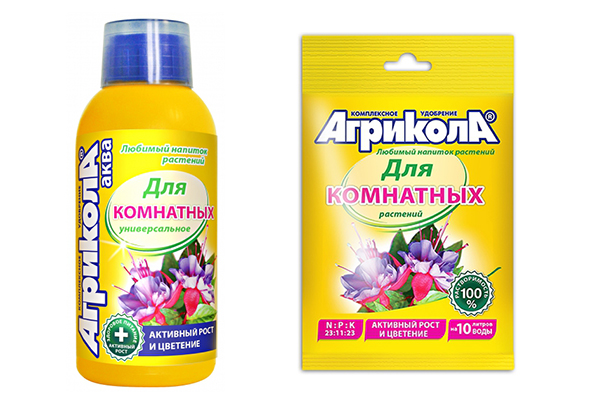
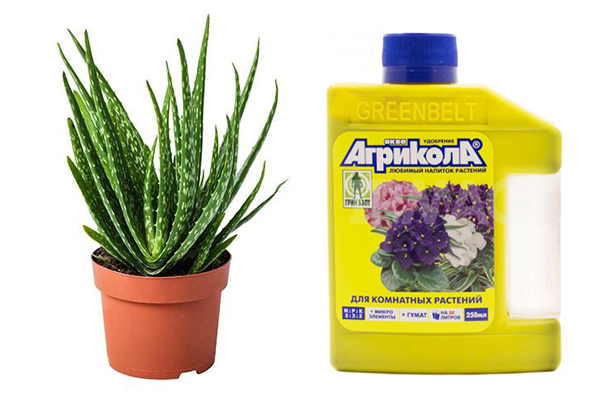
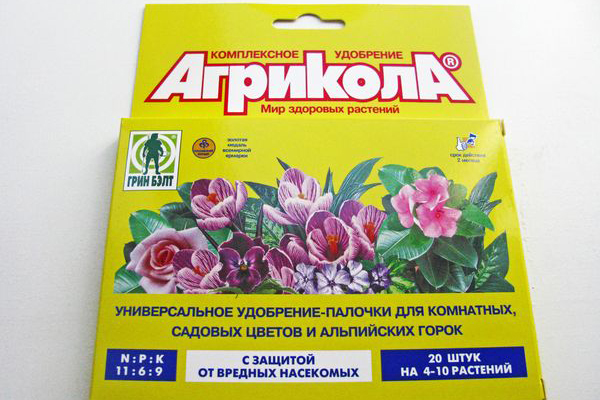
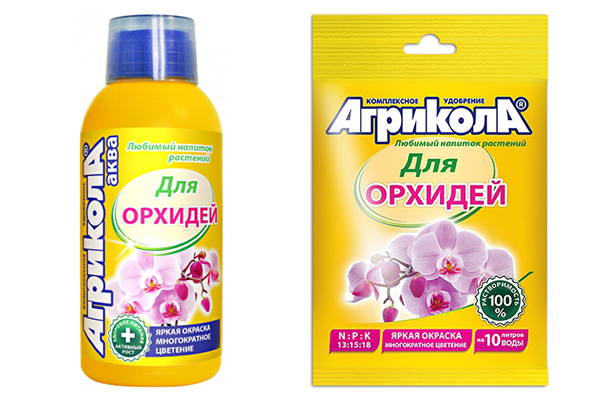
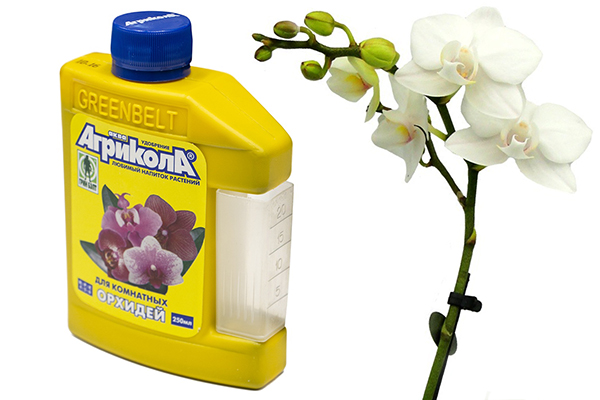
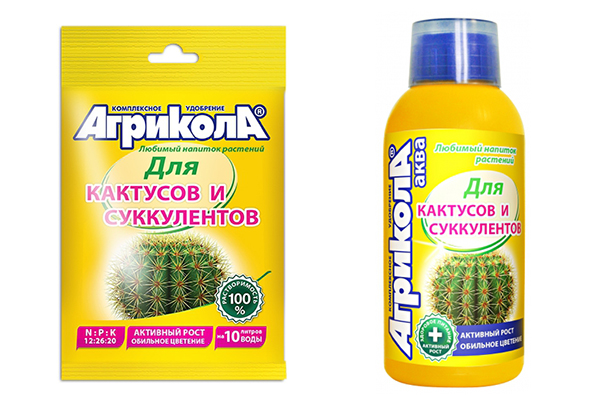
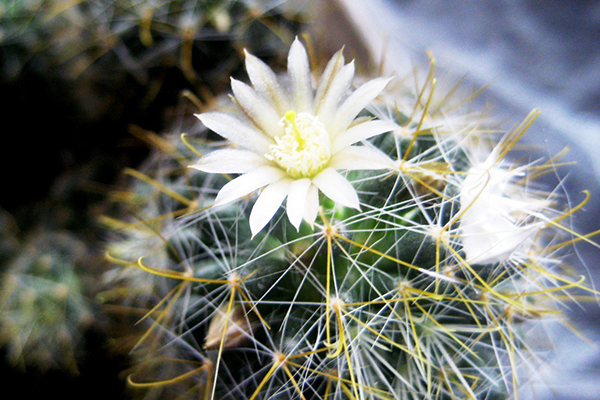
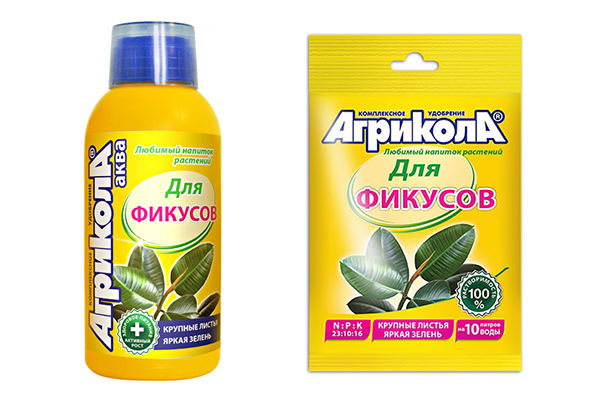
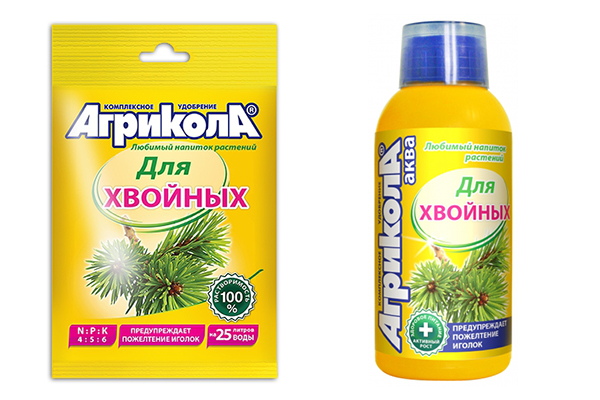
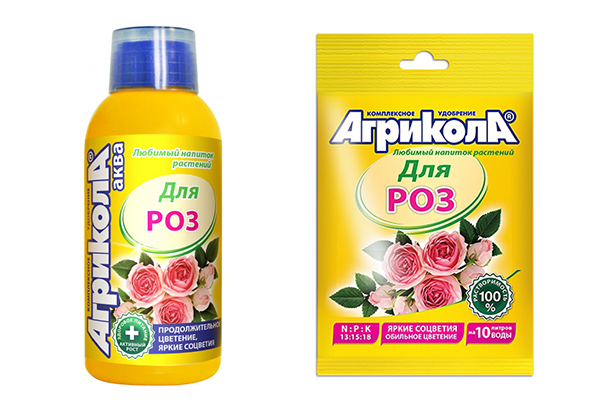
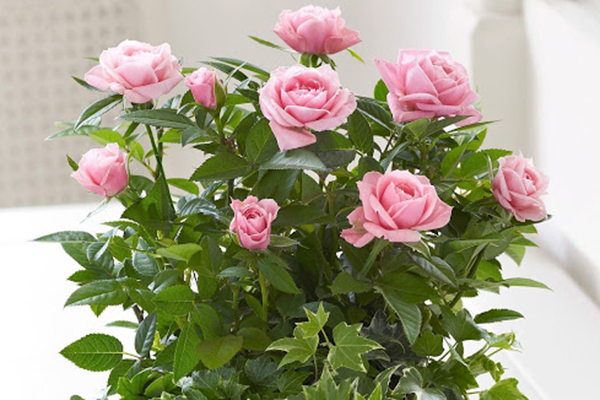
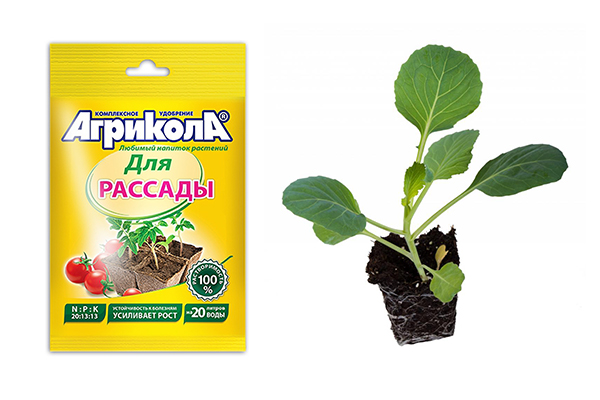
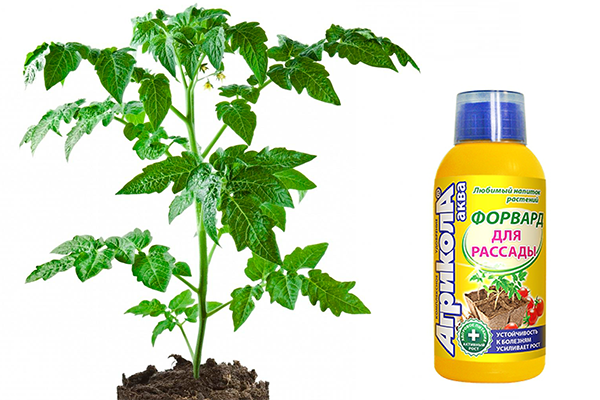
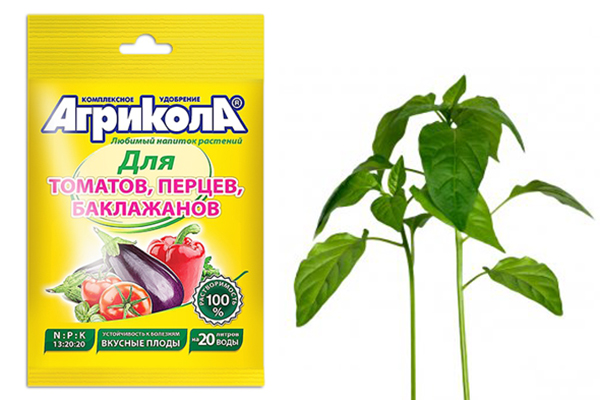
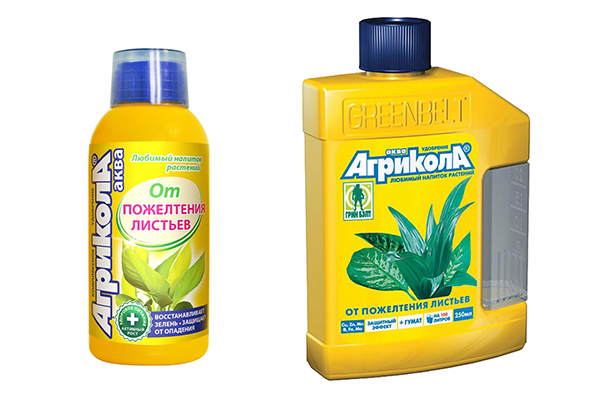

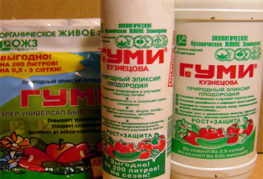
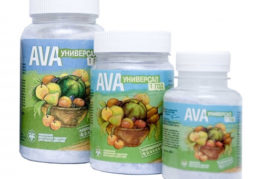
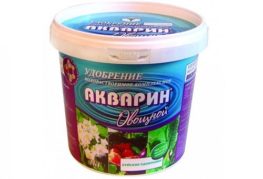
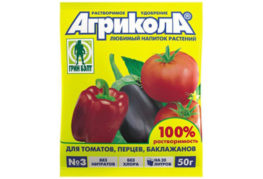
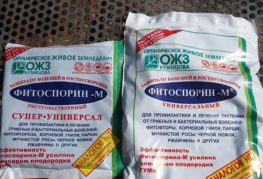
and will be published shortly.